Table of Contents
Triangular Moving Average Indicator
System Overview
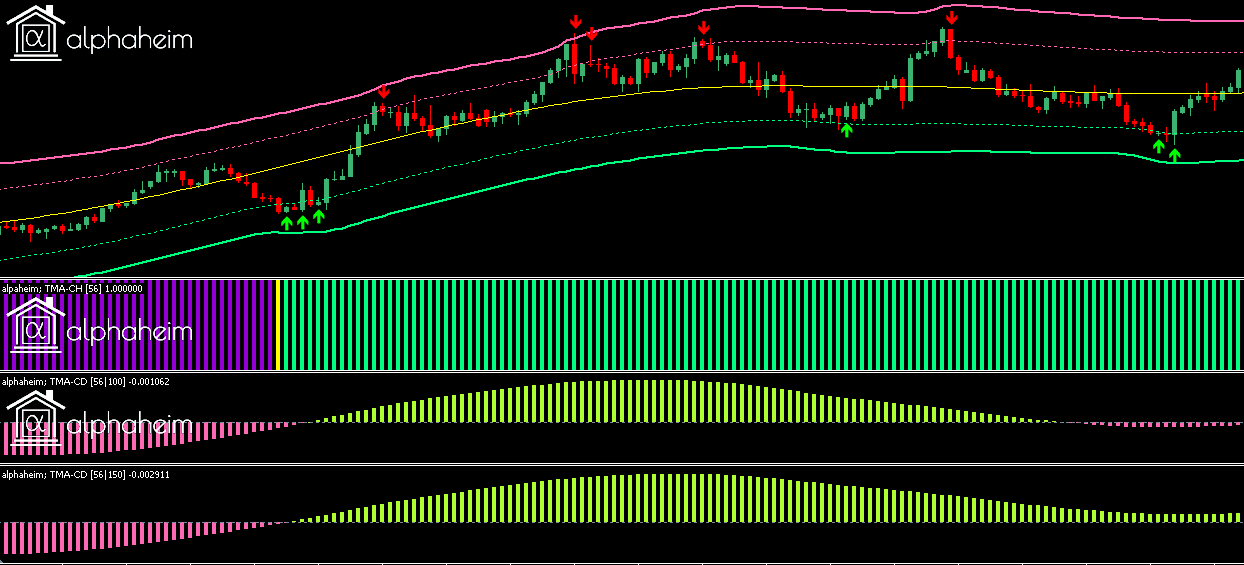
Introduction
What is the TMA?
The Triangular Moving Average (TMA) is a Moving Average that has been averaged again (i.e. averaging the average); this creates an extra smooth Moving Average line. Generally, moving averages are smooth, but the re-averaging makes the Triangular Moving Average even smoother and more wavelike.
The TMA is a weighted average of the last n prices (P), whose result is equivalent to a double smoothed moving average:
SMA = (P1 + P2 + P3 + P4 + ... + Pn) / n
TMA = (SMA1 + SMA2 + SMA3 + SMA4 + ... SMAn) / n
Redrawing
Our TMA system takes the foundations from above, and implements a central gravity shift. The central shift requires extrapolation of data, but there is no 100% exact way of extrapolating data. So, that extrapolated gap is a subject of changes no matter what extrapolation method one uses. For this reason, there is an unavoidable redrawing aspect to this system.
Once the indicators have been loaded on the chart, they will not redraw. If a trading signal appears for a closed candle, it will not disappear. However, if you load the indicators on a chart, and subsequently reload the indicators after a set interval, you will notice the data mismatches. Using the TMA bands in isolation will not warrant accurate trading signals, but with the additional alphaheim TMA indicators, accurate trading signals can be generated.
TMA [Bands]
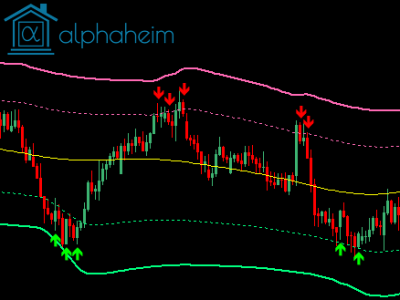
Inputs
Length
- Averaging period for the TMA line.
Applied Price
- Input data for the TMA calculations.
Signal Deviation
- Standard Deviation from TMA line for arrow signals.
SL Deviation
- Standard Deviation from TMA line for possible Stop Loss placement.
Arrow Formations
A bullish arrow will appear when a candle has closed lower than the lower “Signal Deviation” band, and the subsequent candle is of a bullish nature. Until the bullish candle has been confirmed, the arrow may appear and disappear. Once the candle has been confirmed bullish, the arrow will not redraw. Conversely, a bearish arrow will appear when a candle has closed higher than the upper “Signal Deviation” band, and the subsequent candle is of a bearish nature.
TMA-CD
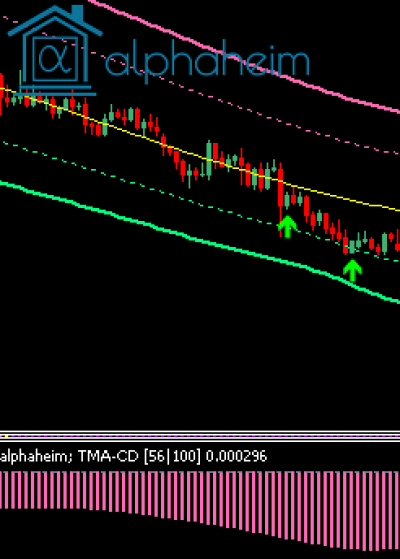
What is the TMA-CD?
The Triangular Moving Average Convergence/Divergence indicator will provide information very similar to a conventional MACD indicator. We have designed it to be a trend-following momentum indicator that shows the relationship between TMA’s of a symbol’s underlying price data. The TMA-CD is calculated by taking the delta of two specified TMA lines, one fast, and one slow.
Trade Filtering
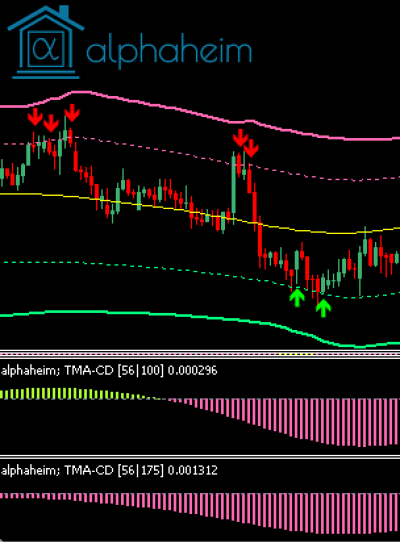
The initial TMA-CD image shows the market in a clear downtrend, with false bullish trading signals. The TMA-CD indicator successfully prevents this trade from being taken. By applying a dual TMA-CD application, it is possible to see a wider picture of the general market trend. Profitable trades are likely to be incorrectly filtered, but a large majority of losing trades are also correctly filtered.
TMA-CH
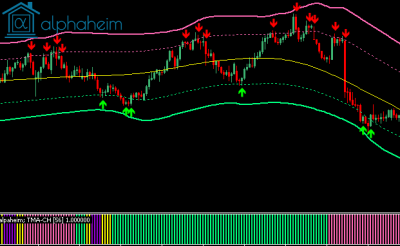
What is the TMA-CH?
The Triangular Moving Average Channel Helper indicator will help identify if a symbol is ranging, or about to break out of range.
Inputs
TMA Length
- Averaging period for the underlying TMA line.
Applied Price
- Input data for the underlying TMA calculations.
Signal Deviation
- Standard Deviation from TMA line for formation of channel.
Min. Range (%)
- Ceiling percentage for a Ranging market classification.
Lookback Period (Max/Min)
- Search period, from the current candle, to seek highest and lowest points of the channel.
How does it work?
This indicator takes the current width of the TMA Bands and compares it to the maximum and minimum width over the “Lookback Period (Max/Min)”.
If the calculated percentage is less than or equal to “Min. Range (%)“, then the histogram shows Purple, indicating a ranging market. If the calculated percentage is 2x the “Min. Range (%)“, then the histogram shows Yellow, indicating the start/end of a range. If neither condition is met, the histogram shows Green for an upward channel in a non-ranging market, and Pink for a downward channel in a non-ranging market.
Trade Filtering
Utility of the TMA-CH indicator depends on an individual’s propensity to trade. The arrow signals from the TMA indicator may be better equipped to only trade in ranging markets, thus only taking trades when the channel helper is Purple. However, as evident from the image, trades in non-ranging markets can also be profitable, but will pose inherently riskier trades.